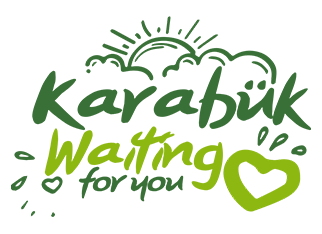Cinci Hoxha
Born in Safranbolu between 1590-1610, Hüseyin Efendi is the grandson of the preacher Sheikh Karabaş Ibrahim Efendi, one of the elders of that region, and the son of Sheikh Mehmed Çelebi.Dec. He received his first education from his father, and the first knowledge of magic and legend that he acquired was again from his father. After that, he went to one of the Suleymaniye madrasas in Istanbul to get a better education. Here he became known for his strong breath. After the appointment of his teacher to the Izmir kadıl, he began to earn his living by reading prayers and distributing healing to patients, but on the one hand, he did not lose interest in the works of magic and magic, and he was not welcome by his new teacher and other Muderris. But the fact that his fame in this matter has spread, even reached the palace, has changed his entire life. He was called to the palace by Valide Kösem Sultan for the treatment of Sultan Ibrahim, who was suffering from psychological discomfort at the time. His brothers IV. Because he was killed by Murat, Sultan Ibrahim, who lived a cage life during his shehzadelik, is suffering from severe psychological disorders due to the fears he experienced until that day when he became a sultan at the age of 25. At the call of Kösem Sultan, Huseyin Efendi's fame was heard all over the country, as he went to the palace and read effective prayers, ensuring the inner relief of the Sultan. After this incident, the Sultan spoke of Cinci Hoxha Hussein Efendi with a great compliment and built a palace next to the Madmud Pasha Mosque for his residence. Although he did not even complete his madrasa education, Huseyin Efendi brought him to the head of one of the Suleymaniye madrasas. He was soon appointed as a teacher of the Sultan and a kadı of Galata. By order of the sultan, he married the daughter of Karachelebizade Mahmud Efendi of old Anatolia kazaskerli. After killing Kemankesh Mustafa Pasha, whom he considered a rival, his population increased thoroughly, he was brought to Anatolian Kazasker, and the Galata accident remained on him as a harpalık. After a while, as a result of the rumors of bribery and misconduct that appeared about him reached the palace, he was taken from the accident, removed from the palace built for his residence and exiled to Izmit. Although he was allowed to return to Istanbul a few days later, this time he was deported to Gallipoli. At the end of the last 10 days, he returned to Istanbul with the permission of Sultan Ibrahim, but after a while, he remained without supporters or protectors after the Sultan was dethroned and killed. IV. Because Mehmed ascended the throne, kapikulu asked him for 200 bags of money for the tip to be given to his soldiers, but Hussein Efendi did not want to pay the desired amount, claiming that he did not have money. Upon the warning of Haji Nurullah, who understood that the situation was deteriorating, he agreed to separate the low, missing, faint coins and broken gold and give a sum. At the order of the vizier of that period, his house was raided, and the panicked Djindji teacher Hussein Efendi Dama came out, jumped from a height of six meters and took refuge in his neighbor's house, but here he was also caught and beaten and taken to the Grand Vizier. He was imprisoned when he did not want to give 200 bags of Maple requested by the Grand Vizier again. While in prison, waziriazama informed him that if he made himself a teacher to the new sultan, he could give him 100 akçe, but this offer was not accepted. A search of his home found bundles, chests full of gold and jewelry, and more than fifty sable furs. The period of bribery and abuse was thoroughly investigated, and it was understood that the cash assets calculated from the gifts he received from the Sultan amounted to more than 3000 bags. After torture and death threats in prison, he told me where the money was found. Indeed, it was found that there were 70,000 pennies with twelve freckles. IV. For a while, these coins distributed for Mehmed's tip to ascend the throne circulated in the public mouth under the name ‘djindi akçesi’. After being imprisoned for some time, he was appointed to the Sanjak Principality of Ibrim in Abyssinia province because he was afraid of his spiritual power. However, when he arrived at Mihalic on the way, he was allowed to stay there after the exacerbation of gout. Although he was allowed to return to Istanbul after a while, when he returned, he caused discomfort in the Palace after he spoke back and forth on the way that his goods and money were wrongfully taken and participated in the uprising that was aimed at suing the blood of Sultan Ibrahim, and he was killed by Huseyin Sergeant of Limnili in October 1648.
3 years before his death, he built a building in his hometown of Safranbolu, which is now used as a hotel of the Cinci Khan, to be used as an inn during the period.
Source: http://www.cincihan.com/cinci-hoca
Checkers If The Shoe Is Defective
Safranbolu, which is on the UNESCO World Heritage list and has been under protection for a quarter of a century, attracts attention with its inns, baths, houses, Ottoman architecture, cultural works, and also with its idioms.
Safranbolu, which is among the" 20 best protected cities", bears the fingerprints of the Ottoman Empire and is also at the forefront of its cultural values, also leads the proverbs and deceptions that are still frequently used today.
Safranbolu, whose known history dates back to 3 thousand years BC, is also known as the point of origin of Proverbs and idioms such as" not to smell shit"," the neighbor needs the ash of the neighbor"," to grow feces in a tannery".
The most famous of these idioms is the phrase "throw the shoe checkers". Yemeni Arasta, which had 48 Yemeni Masters built by the Ottoman Grand Vizier Izzet Mehmet Pasha in 1661, is known as the origin point of this phrase.
"If The Shoe Is Defective, The Checkers"
Only one of the 357-year-old Yemeni shops in Yemeni Arast, which consists of two long and narrow streets built with a guild system, serves Yemeni.
Yemeni master Erhan Bashkaya, also referred to as the last Yemeni, describes the phrase "shoe checkers to be thrown" as follows; "Yemen is known as hijab in some regions. In our region, sandals are passed as shoes. Its outer surface is made of bovine skin, and its inner lining is made of goat skin. The Yemenis here were sent to our soldiers in the liberation war, working day and night. In the past, a delegation of shopkeepers was formed in the bazaar when the yemeni, which was taken from here and repaired, was defective. After both the master and the customer are rested, if the customer is right, the fee is paid, and the defective shoes made by the master are thrown on the roof of the shop. People who see this do not shop in this store, the master will have his earnings, and indeed the shoe is thrown into the checkers, it will be forgotten." said.
"We Will Not Make This Art Throw The Shoe At The Checkers"
Occupations that have cultural and artistic value, which are about to disappear, are protected by the Provincial Directorate of Culture and Tourism of Karabük, while studies are organized in their survival.
Erhan Bashkaya, the last Yemeni to support these efforts by being a Yemeni for 38 years, said that he had done and would do everything he could to prevent the phrase "throwing the shoe checkers" from returning to reality.
He stressed that he was alone in living this profession, and finally instilled this profession in his son, that he would continue the profession of yemeniism, that the shoe of this profession should not be thrown at the checkers.
News: Nurhan Çetinkaya
Source : https://www.ajanskarabuk.com/pabuclar-dama-ilk-safranbolu-da-atilmis/1050
Bahaddin Ghazi
Every region has a spiritual elder.The spiritual founder and owner of Karabük is also considered Bahattin Gazi.Bahattin Ghazi is a friend of Allah who came to Karabük from Horosan.
According to rumors, when Karabük was a 13-digit village, he settled in the neighborhood of Karabük Village and started to shepherd here.The two events that reveal his ceramics are the mosque and Kayabaşı bridge that he built in Karabük Village.He is the architect and master of this great God-friendly bridge.He weaves the feet of the bridge himself from stone and connects it with Horosan mortar.It fastens the boards of the bridge with wrought iron.The event that attracts the most attention when doing these studies is that it transports the necessary timber to the deer.For this reason, he is called” Father With Deer".Villagers who wonder how he does these things they follow him day and night and see him carrying deer through the trees.This great friend of Allah, who sees that the people's trust increases with the advent of ceramics, decides to emigrate to the hereafter.
A few days before his death,he leaves the house and tells his wife, “if I don't come home in three days, let my calf go after me, and he will find me.”In the end,it also happens that the body of this blessed person is located on the Dede Plateau, 28 km from Karabük, and he is buried there.His tomb is open to visitors.In addition, “Bahattin Gazi Memorial Days” are organized every year in cooperation with Bahattin Gazi Foundation and Karabük Municipality.
The mosque he built in Karabük Village and the Kayabaşı Bridge made him recognized and famous. After the construction of the mosque, Bahaddin Ghazi decided to build a bridge on the upper side of the current Kayabashi Bridge in order to establish a connection between Kayabashi and Karabuk.Dec. The villagers also help him. He is an architect, a stonemason, a blacksmith, a carpenter, and a shipper in the construction of this God-friendly bridge. The feet of the bridge he built are made of stone, connected with Khorasan mortar, the bridge still stands intact. He fastened the bridge's boards with wrought iron. The event that attracts the most attention is the transport of the necessary trees and timbers to the deer in the forest with the pottery that Allah has bestowed upon him. The villagers, wondering how Bahaddin Ghazi did these things, wait in front of him at night when he came from the forest, and when he saw that he was pulling the timber with deer, he realized that he was evliya and changed his attitude and behavior, they no longer treated him like a shepherd, they showed the necessary respect for a friend of Allah
Bahaddin Ghazi, on the other hand, wanted to emigrate to the hereafter when the secret of the Guardian was learned by everyone and the interest and trust of the people increased. A few days before his death, he told his family, “if I don't come home in 3 days, release my calf, and he'll find me!"he leaves the house in a will.
Finally, 28 Km To Karabük. Dede goes to the Plateau and bids farewell to this realm by surrendering his soul to his Lord. His tomb is here and open to visitors. Every year, Bahattin Gazi Memorial and Dede Plateau festivities are organized by the foundation established in his name.
Source : https://www.karabukhaber.com.tr/bahattin-gazi-geyikli-baba-hazretleri.html









